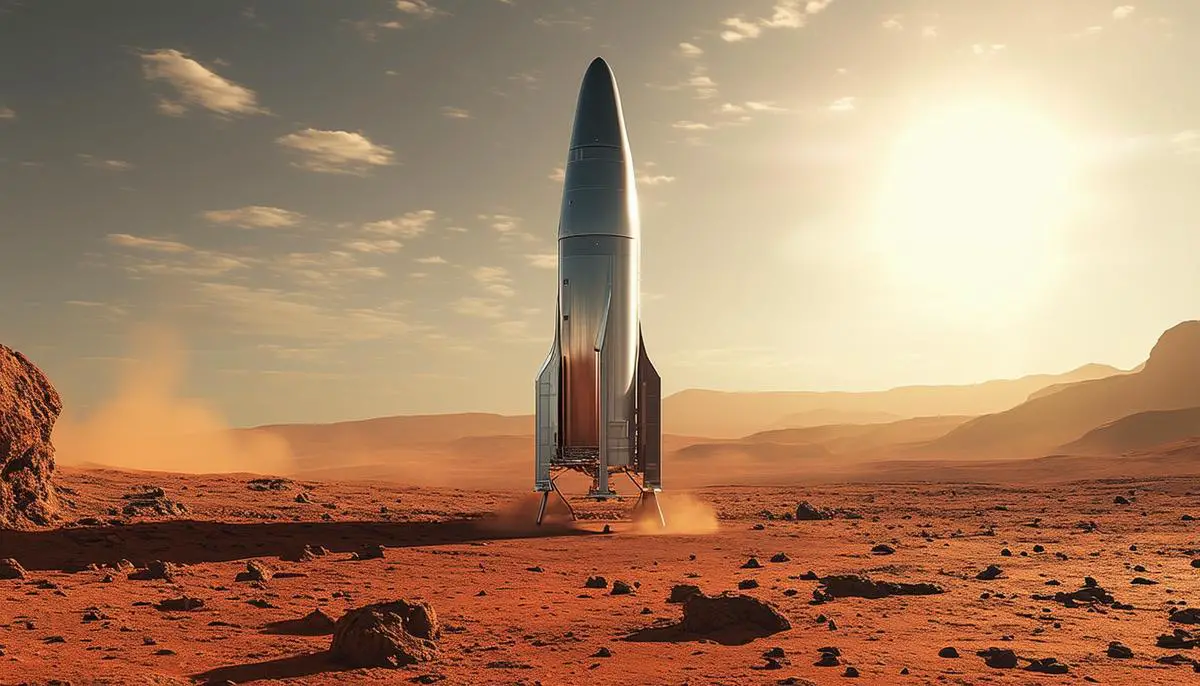Starship Development
In April 2023, SpaceX encountered significant challenges during Starship's first test flight, where a critical separation failure between the two stages led to the vehicle being intentionally destroyed. Despite these setbacks, SpaceX gathered crucial data to iterate on its colossal machine.
By November of the same year, SpaceX prepared Starship for a second attempt, upgrading several systems based on insights from the previous trial. Though it faced some similar issues, resulting in early termination, there was quantifiable advancement in certain vehicle dynamics. Notably, the separation occurred successfully, fulfilling at least one essential objective of the previous failure.
Following these ascents, adjustments focused particularly on the Raptor engines were implemented. These are at the core of Starship's propulsion and were under scrutiny after the Raptor engines had interrelated issues. Intense testing and revamps aimed to rectify these challenges to enhance performance reliability.
SpaceX's ambitious schedule continued with a third test flight conducted on March 14, 2024. This marked a shift in the Starship program from not only addressing previous technical hurdles but also setting stages for rigorous schedules that could support future operational cadence. The mission accentuated higher acceleration and extended flight duration which were pivotal in affirming Starship's potential for long-duration missions.
Currently, NASA relies on Starship to become a key player in the Artemis missions, planning returns to the moon and eventually human landings on Mars. Each successful test hints at reducing the timeline toward these milestones, aligning with public and private objectives in space exploration.
To ensure that Starship could sustain multiple missions, there has been a near-constant cycle of engineering reviews focused on honing all vehicle aspects from hardware reliability to computational stability. Eyes are also set on the booster's return capabilities, pushing for innovations that could see Super Heavy integrate directly into reflight procedures without major refurbishments.
Communication within SpaceX suggests that ongoing refinements after each flight have shaved months off the development cycle, promising a significant boost to future test frequencies. The team hints at executing flight tests faster, supported by production optimizations that speed up both manufacturing and readiness assessments.
Looking ahead, SpaceX envisions increasing Starship's launch frequency, supporting its goals of sustainable off-Earth settlement and extensive interplanetary travel. The company marches on with plans to shore up Starship's design and operations, with the intended cadence of flights aimed at perfecting the reusability model that makes Musk's vision of Mars colonization feasible.
Calculations on refueling missions show a variant of dependencies mainly revolving around how the Starship's extensive travel sequences will necessitate orbital refueling pods, demanding several missions to prepare for deep space excursions. Such logistical elements are crucial puzzles SpaceX engineers are piecing together amidst ongoing tests.
The core of SpaceX's strategy revolves around rapid testing together with immediate response engineering — a recipe that has conditioned its many achievements and could shape spaceflight's next monumental advancements. As each launch thrusts Starship carefully past its lengthy shadow of technical troubles, it forms a clearer pathway toward extraterrestrial ventures.
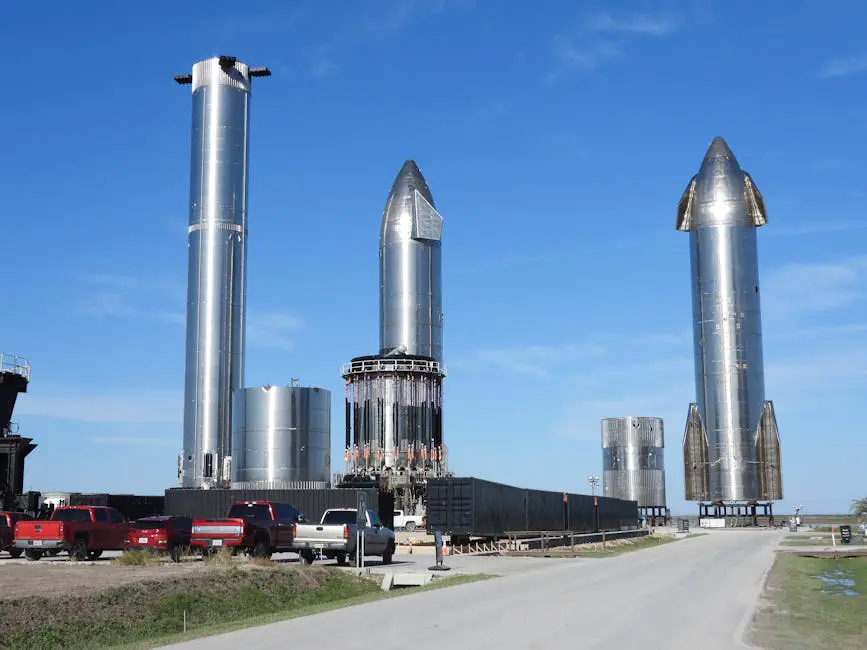
Increasing Launch Cadence
The goal to scale SpaceX's launch operations to an impressive 144 flights a year by 2024 epitomizes the company's ever-escalating ambitions in spaceflight. Realizing this objective involves surmounting numerous logistical, technological, and regulatory challenges, but it also promises unprecedented benefits such as enhancing satellite deployment capabilities and enabling more frequent crewed missions.
Logistically, orchestrating this substantial increase in launch frequency requires a comprehensive overhaul of operations both on the ground and in production. SpaceX must ensure that its infrastructure, from launch pads to hangar facilities, can support rapid turnarounds. This necessitates physical upgrades and advanced logistical planning systems that can handle complex scheduling, maintenance, and immediate contingency responses.
Technologically, pushing the boundaries on launch cadence intensifies the demand for rapid and reliable rocket manufacturing and refurbishment processes. To meet the target, SpaceX continues to innovate in manufacturing technologies that speed up production while maintaining the stringent quality required for space travel. Automation in production lines and AI-assisted assembly processes are probable areas of development. The company's commitment to reusability—successfully landing boosters and quickly refurbishing them for re-flight—is fundamental to attaining high launch frequencies.
From a regulatory perspective, increased flight cadence presents a multifaceted challenge. Each launch requires approvals from various regulatory bodies, including the Federal Aviation Administration (FAA), which assess safety protocols, environmental impacts, and airspace coordination. With flights planned at nearly three times the traditional rate, there is a need for a more streamlined regulatory process to accommodate the rapid schedule without compromising on scrutiny and safety.
The potential benefits of reaching a 144-launch target are substantial. This would significantly enhance SpaceX's capacity for deploying its Starlink satellites, pushing further its ambition to provide global broadband internet coverage. Each additional launch expands the network and accelerates the iterative improvements on satellite technology and deployment strategies.
A higher launch cadence facilitates more frequent crewed missions, which is paramount to advancing human space exploration. Regular launches pave the way for sustained human presence in orbit, on the Moon, and potentially on Mars. This increased operational tempo could make space a standard domain for human endeavor akin to air and sea travel today.
Despite these advancements, the aggressive pursuit of a 144-launch cadence embodies the typical 'high-risk, high-reward' scenarios that typify SpaceX's approach under Elon Musk's leadership. While logistical, technological, and regulatory hurdles are steep, overcoming them could significantly advance SpaceX's capabilities and humanity's broader spacefaring ambitions.
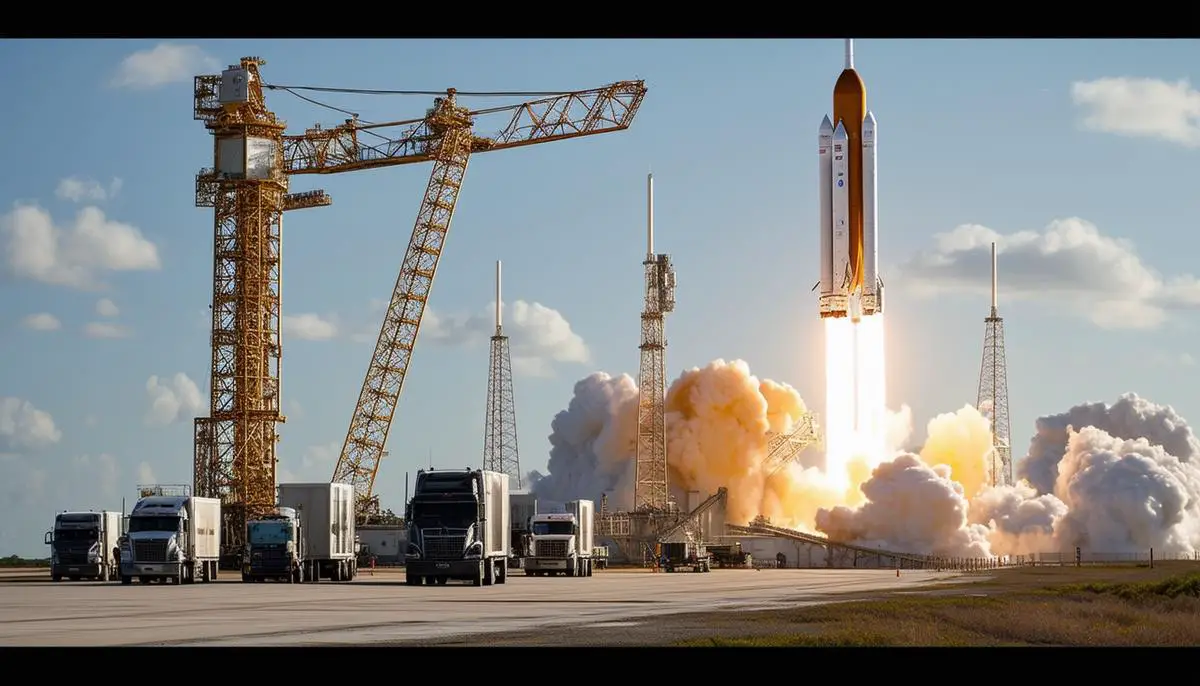
Starlink Expansion
SpaceX's Starlink network, a cornerstone in the burgeoning domain of satellite internet services, is on an ambitious trajectory to expand its global coverage. Jonathan McDowell, a well-regarded astronomer, has tracked about 5,874 satellites currently orbiting, with 5,800 of these being operational as of April 2024.1 To significantly transform the internet connectivity landscape, especially in underserved and remote areas, SpaceX envisions a constellation comprising as many as 42,000 satellites.
Facing the complexity of massively scaling up operations, the technology underlying Starlink's deployment plays a pivotal role. The modification and enhancement of satellite design are constant. The newer V2 satellites, markedly more massive than their predecessors, bear the hallmark of this evolution, combining increased capabilities with denser packing strategies to optimize launch efficiency. This iterative technological advancement is critical as SpaceX presses forward with plans to frequently launch large batches of satellites aboard its increasingly reliable Falcon 9 rockets.
The burgeoning size of the constellation presents technological and significant regulatory challenges. Each batch of satellites requires clearances that assess potential impacts on the environment and the safety of space operations. Coordination with international space agencies and compliance with space traffic management norms are prerequisite to mitigate collision risks and space debris concerns – the latter being underscored by escalating anxieties within the astronomical and spaceflight safety communities.
Regulatory hurdles, although substantial, are addressed with a proactive stance by SpaceX towards engagement with worldwide telecommunications regulators. Enhancing models for debris mitigation and end-of-life satellite disposal processes are part of SpaceX's commitment to responsible space stewardship, which is crucial to gaining and maintaining launch licenses.
The ultimate goal of this vast network is far-reaching. By deploying a comprehensive mesh of satellites, Starlink aims to provide high-speed internet universally. This endeavor is commercially attractive and aligns with global objectives to bridge digital divides and catalyze socio-economic development in less accessible regions.
Each successive launch serves a dual purpose – extending service coverage and refining technological frameworks. The lessons learned from each deployment feed back into both the terrestrial aspects of the network management and the orbital dynamics of satellite operations. This vigorous and agile approach ensures that Starlink remains at the cutting edge of space-based internet service provision.
Navigating these technological enhancements and regulatory landscapes is complex, but SpaceX's trajectory remains clear and firmly set on establishing a next-generation infrastructure poised over every point on the globe—a feat that will likely redefine internet connectivity.
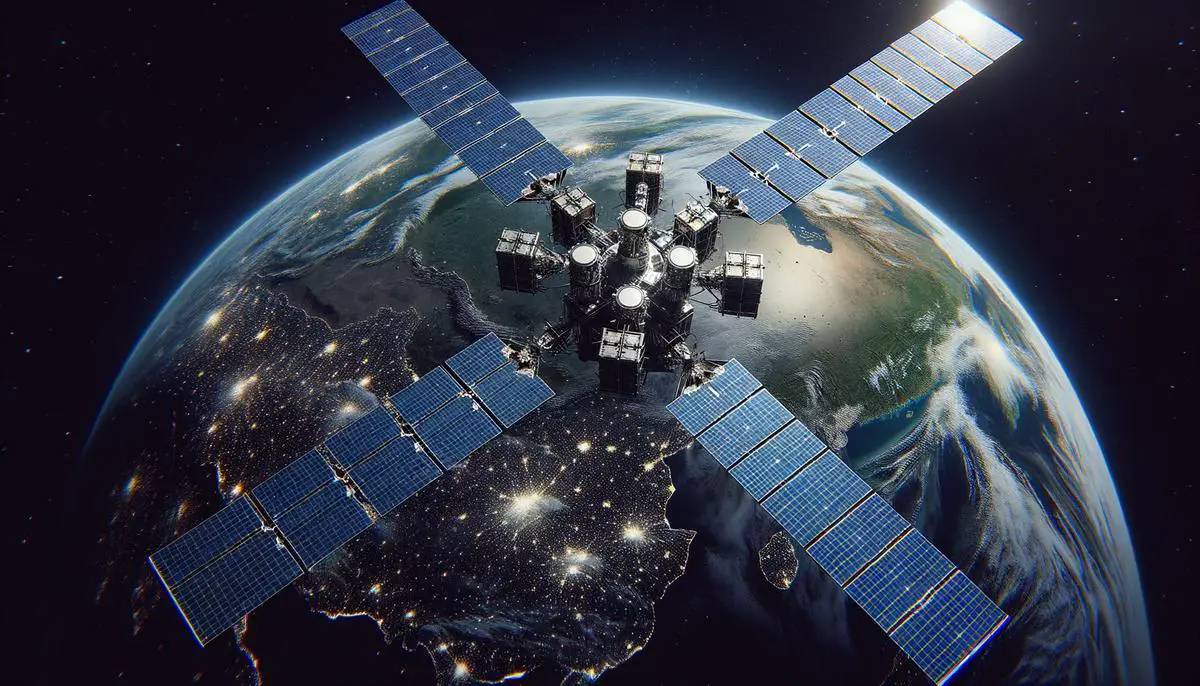
Mars Mission Timeline
Elon Musk's timeline for landing humans on Mars by 2027 tags Starship as a pivotal tool in achieving what could be one of humanity's most significant milestones. Given the ambitious nature of this timeline and just a few years to make the Mars crossing feasible, SpaceX focuses heavily on expediting Starship's development, testing, and full operational readiness.
Technologically, several advancements are critical:
- Mission Reliability: Starship must demonstrate end-to-end reliability over multiple missions, which involves successfully handling the intricacies of entering and exiting different planetary atmospheres and surface operations.
- Life Support Systems: The spacecraft's design to support human life throughout a Mars journey— including life support systems, radiation shielding, and sustainable resource utilization—remains under stringent evolution.
- Reusability: The full reusability aspect of Starship is particularly essential as it drives down the costs of such missions, aligning with SpaceX's vision of making space more accessible and fostering interplanetary travel.
- Engine Performance: Another significant advancement lies in the robustness of the Raptor engine, which powers both the Starship and its Super Heavy booster. These engines must perform reliably under the harsh conditions of long-duration space missions. Continued enhancements and rigorous testing routines are vital, stressing stability across multiple phases of flight and operational scenarios.
Permitting issues add layers of complexity to an already tight schedule. Regulatory approvals, which include various safety, environmental, and occupational checks, need to match SpaceX's swift pace of development and testing. Potential extended timelines in securing these approvals could delay crucial demonstration flights that are necessary before any manned Mars mission.
Logistical hurdles also frame another area of difficulty. Long-duration missions demand advanced planning for contingencies, spare parts, and autonomous repair capabilities. Given the distance involved and potential communication delays with Mars, these missions require high degrees of technological independence and robustness, which currently are under rigorous development.
In terms of building a sustainable pathway to Mars, technological solutions for start-off and regrounding need integration into Starship's capabilities. These include precise landing technologies, in-situ resource utilization (ISRU) for producing fuel and breathable air from Martian resources, and robust engineering to handle unpredictable surface conditions on Mars.
Elon Musk's timeline may appear optimistic to some, considering the magnitude and multiplicity of hurdles that SpaceX must transcend. The drive towards Mars colonizing aligns with SpaceX's broader goals that challenge conventional boundaries of aerospace engineering. With a concerted focus on advancing Starship's technological capacities and addressing regulatory and logistical challenges, achieving a Mars landing within the next few years could transition from ambitious planning to plausible achievement—another testament to SpaceX's disruptive influence in space exploration.
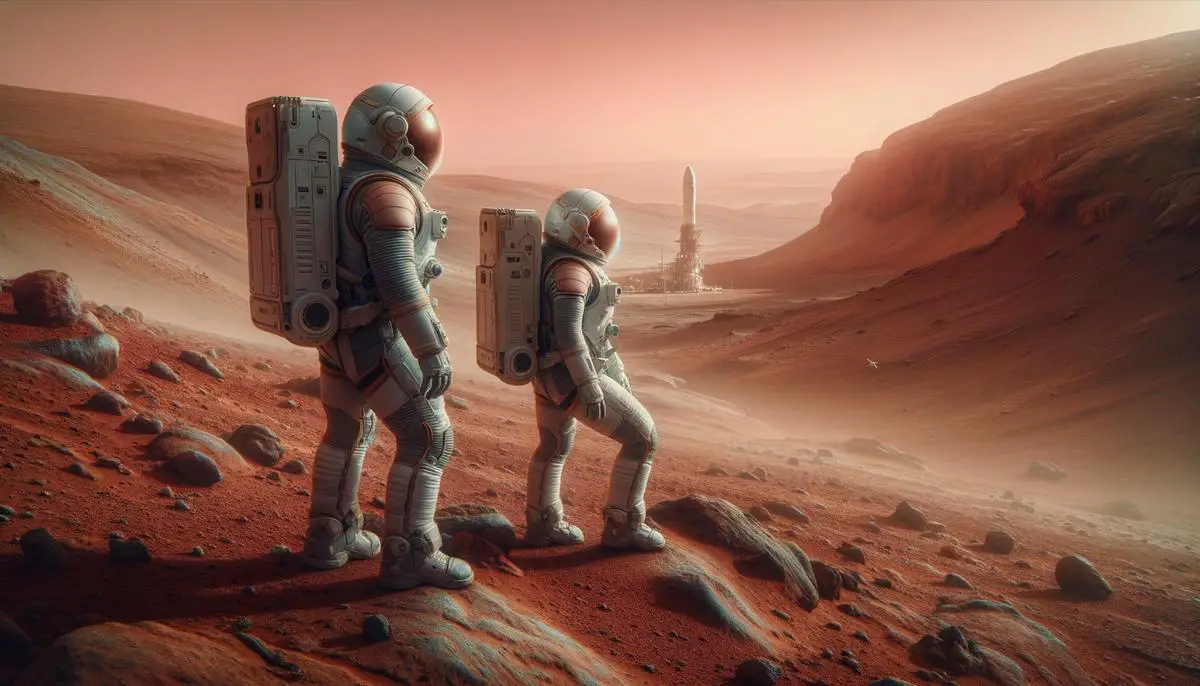
Collaboration with NASA
SpaceX's collaboration with NASA, particularly through the Artemis program, exemplifies a powerful synergy between public and private sector efforts in advancing space exploration. Chosen as the first commercial partner for the Artemis missions intended to bring humans back to the moon and beyond, SpaceX's Starship is slated to perform lunar landings, leveraging its remarkable payload capacity and reusability capabilities.
This strategic association began deepening when NASA awarded SpaceX the contract to develop the human landing system for Artemis—an agreement marked as a collaborative milestone and a vote of confidence in SpaceX's engineering prowess by a historic space institution. This collaboration illustrates a key shift in NASA's approach, increasingly relying on commercial partnerships to achieve its series of rigorous space objectives economically and efficiently.
From a technological standpoint, this partnership permits SpaceX to refine its technology under NASA's stringent operational conditions. Concurrently, NASA enjoys access to innovations stemming from one of the most ambitious space transport vehicles ever conceived. Technologies pushing the envelope such as Starship's fully reusable design and stainless steel construction present novel solutions that stand to sharpen NASA's own mission capabilities significantly in both lunar operations and potential Mars missions.
Using Starship for NASA's lunar ambitions also entails shared risk management, with designed redundancies that enhance mission assurance for NASA while allowing SpaceX to showcase and vet its technology under the high-profile and demanding circumstances of moon missions. Such an environment accelerates technological maturation that might otherwise progress at a slower rate.
Financially and logistically, the partnership effectively distributes cost implications, resource pooling, and scaling challenges. By sharing the steep expenditures involved in lunar exploration, NASA can allocate resources across a broader range of scientific studies and potential missions, whereas SpaceX benefits from substantial funding that subsidizes part of its spacecraft development—a crucial factor considering Starship's ambition scale. Relatively, the shared dissemination of resources has contributed to reduced budgets and more sustainable execution for NASA's expansive agenda.2
The cultural impact of this cooperation should not go unnoticed either. Joining the storied annals of NASA with the trailblazing zeal of SpaceX creates a rich narrative that extends beyond immediate technical successes. It embodies a renewed spirit in space exploration, inspiring industries, academic sectors, and the public alike to support or get involved in astro-focused initiatives.3 Collaborative projects receive prolonged bipartisan support which is immensely valuable given political shifts could substantially impact funding for space exploration.
The collaboration between SpaceX and NASA extends far beyond mere service agreements or technological partnerships. It represents a monumental cooperative venture that propels closer to our cosmic neighborhood, joining collective human aspirations with technological audacity. Both entities stand to gain immeasurably from this undertaking, cementing a kinship that will likely define the trajectory of space exploration in this era.
- McDowell J. The low earth orbit satellite population and impacts of the SpaceX Starlink constellation. Astrophys J Lett. 2020;892(2):L36.
- Grush L. NASA: SpaceX's Starship could land astronauts on the moon "several years" before 2024. The Verge. May 14, 2020.
- Greenblatt N. SpaceX and NASA: the public-private partnership launching a new era of spaceflight. The Conversation. November 29, 2020.
![]()
